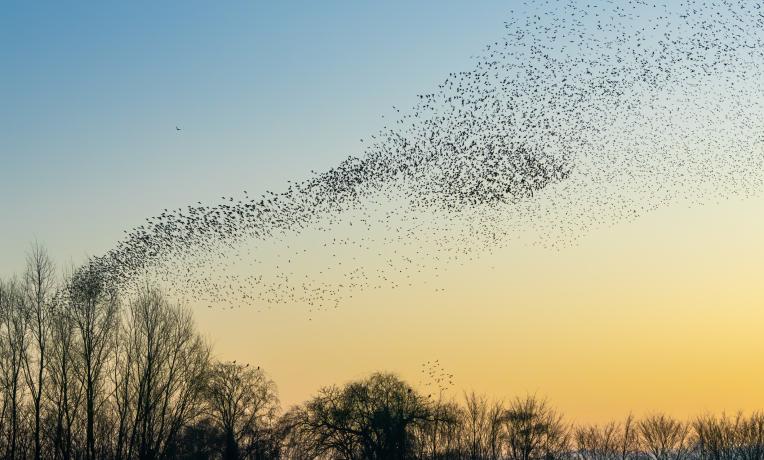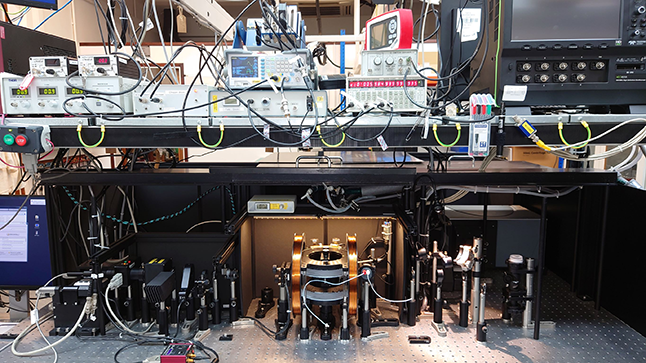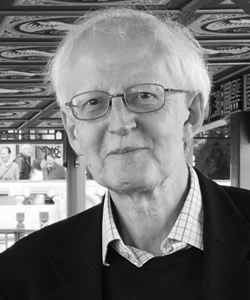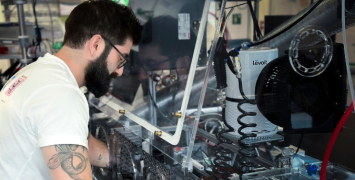How do birds navigate?
Bird migration is driven mostly by weather and the availability of food. But how birds migrate from one region to another without getting lost is less well understood. ERC grantees Henrik Mouritsen and Peter Hore are looking into how birds sense the geomagnetic field to help them navigate. This unique scientific collaboration between biologists and chemists is paving the way for a new field of science: quantum biology.

Humans are aware of their senses: we see, smell, hear and feel. But how do animals sense magnetic fields? And how can we prove that they do? These questions inspired ERC-grantee Henrik Mouritsen, Professor of Neurosensory Sciences at the University of Oldenburg, while observing birds that migrate from different continents to Denmark.
His curiosity has led to a truly multidisciplinary research endeavor for which he joined forces in 2019 with Peter Hore, Professor of Chemistry at Oxford University. The two scientists combined their complementary knowledge and experience in disciplines ranging from molecular biology and biochemistry to biophysics and quantum mechanics, to find out more about the secrets of quantum biology.
“The project aims to describe a mechanism that uses quantum coherence and could form the basis of the magnetic compass of birds that guides them on their migration routes”, Henrik Mouritsen explains “In our research, we make use of protein molecules produced in our lab and the spectroscopy tools that Peter and his colleagues developed in Oxford. It is a true synergy: we couldn’t have done it without each other.”
Watching this video you are accepting Youtube cookies policy
Birds’ eyes
The ERC funded research starts from the premise that magnetically sensitive chemical reactions happen in birds’ eyes within proteins called cryptochromes. When they absorb light, these proteins can respond to a magnetic field, even to one as weak as that of the Earth. The question is whether and how this actually happens. If it does, is this reaction sensitive enough to be the basis of a bird’s magnetic compass? And how do migratory birds handle low visibility due to bad weather or pollution?
In their quest to understand how this magnetic compass guides birds to find their way across the Earth, the team experiments with proteins in the lab and works with migratory birds. The researchers focus on the European robin and the Eurasian blackcap, two of the ten most common bird species in Northern Europe.
A main challenge was to produce cryptochrome molecules with a specific co-factor, flavin, which absorbs the light and then starts the generation of the magnetically sensitive radical pair. Birds have six different cryptochromes, which look very similar, but only two of them incorporate this crucial flavin cofactor. Without it, there is no magnetic field effect.
Light responses
Mouritsen’s team worked out how to produce this protein in the laboratory. This was a major advance: it allowed them to be studied spectroscopically. Hore’s theoretical estimates proved to be correct: the electrons behave within the molecules exactly as quantum mechanics had predicted. The researchers also plan to record light responses of migratory birds using a calcium imaging setup, and have worked on the first X-ray structure of a bird cryptochrome through a collaboration with researchers at the University of Texas.
 @Stuart Mackenzie -The broadband cavity-enhanced absorption spectrometer used in Oxford to study the magnetic sensitivity of cryptochromes -
@Stuart Mackenzie -The broadband cavity-enhanced absorption spectrometer used in Oxford to study the magnetic sensitivity of cryptochromes -
“I'm just fascinated that it is technically possible to see an electron jump inside a bird molecule”, says Mouritsen. “We are now getting closer to answer the question of how birds navigate from so many different directions, from quantum chemistry to biochemistry, neuroscience and behaviour. Hore agrees. “A multidisciplinary approach is really necessary to tackle such questions”, he adds. “I never dreamt, 20 years ago, that I would be working closely with biologists who do experiments with animals. And I'm sure Henrik didn't believe he would ever be invited to a meeting on quantum mechanics. But we both did, and it's been enormously stimulating.”
Understanding how birds migrate could give them a better chance of protection, especially where climate change may force them to find new migratory routes. The research findings may also open the way to the development of new navigation devices to use in situations where GPS is not functioning. Hore concludes: “The term ‘birdbrain’ is sometimes used to describe somebody who is not so smart. This refers to the small size of the brain of a bird. But with this project, I have learned that this is not true of birds – they are incredibly smart.”
BIO

Peter Hore is a Professor of Chemistry at Oxford University. He has worked on a number of topics around magnetic resonance and the effects of electron and nuclear spins on chemical reactivity, an area known as Spin Chemistry. Since 2005 he has been trying to unravel the biophysical mechanism that allows migratory song birds to detect the direction of the Earth’s magnetic field as an aid to navigation.

Henrik Mouritsen works as a Professor of Neurosensory Sciences at University of Oldenburg. He mainly studies the mechanisms underlying animal navigation, in particular the two magnetic senses existing in long-distance migratory birds, combining various disciplines, from behavioral sciences to neurology physiology. He was interested in birds since the age of 10 and is also a part-time nature photographer.






